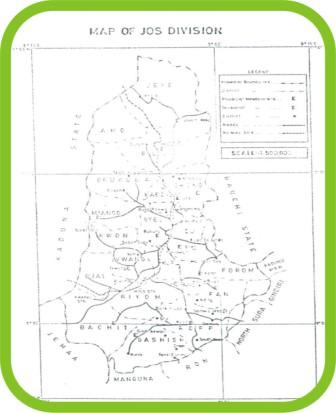
Most of the content on this page were drawn from
a historical official document of National Archives of Nigeria titled THE PLATEAU PROVINCE OF NIGERIA FROM 1926 - 1934 BY H. HALE MIDDLETURN
|
THE HISTORY AND FOUNDERS OF JOS
Jos, the capital of Plateau state currently a cosmopolitan city with the highest population in the state comprise people from all parts of the country including foreigners living in. Every city has history and in effort to dig that of Jos, certain crutial questions need to be raised.
such as what is its origin? who are the founders and when was it found?
It would amount to a monumental failure, serious error and a misleading information on this subject if one would merely use the majority population or the most influencial group of people in the city as a yard stick to determine
the answer to these questions. Truth is that this city called Jos today did not emerged suddenly as we see it today but underwent generational metamorphosis
of history. It is in this light that we will begin the history of this city from scratch. Interestingly also is the colonial administrative reports of the city accounted for by the whitemen.
PLATEAU PROVINCE
Jos is an offspring of Plateau Province. Therefore to understand the history of Jos it is very important to begin from this point.
Plateau province was brought into existence as one of the measures of reorganisation of the northern provinces in 1926, and is divided
into five divisions. They are Jos, Pankshin, Jemaa, Southern and Shendam divisions. It was created out of the provinces of Bauchi, Muri,
and Nassarawa out of which the last two disappeared completely. Meaning what we had as Plateau Province and partly plateau state today were all products of Bauchi province.
Below is the map of Jos Division of Plateau Province

CLICK IMAGE FOR FULL VIEWdownload Certified True Copy of this document
Mr Hale Middleturn explained thus
the total area of their habitat is 1431 square miles and is divided into fifteen districts which formed the Jos Division.
The districts are named after the town of the head chief of each district which include Achakka, Amo, Buji, Faram, Ganawuri, Gashish, Heipang, Jere, Kuru, Kwal,
Machi, Naraguta, Rim, Rop and Vom.
Jos lies in Naraguta district. However, the report continued that
On the eastern side of Achakka district joins the Naraguta district in which are the small Anaguta tribe of about 3000 and the Jarawa village of Jos with a
population of nearly 1000. The main part of the Jarawa tribe is in the Bauchi Emirate, the Jos Section originally comming from Lamingo to avoid conquest by the Emirs
of Bauchi. They (Afizere) still have association with their main body and return to Lamingo from Bauchi for circumcision and othe Tsafi purposes. In fact Jos and Lamingo
form a dual village and alternatively provide a chief for certain Tsafi purposes. The Anaguta tribe have asimilated much Jarawa custom and have always been allies of the
Jarawa of Jos. Naraguta and Jos fought side by side against the fulani jihadists, who camped on the outskirks of Jos but were eventually driven out, and also against the
the Rukuba.
From above report however, no one can successfully draw up an authentic history of Jos without mentioning Jarawa (Afizere) and Anaguta tribes as aborigines. This revelation
among others to come debunk claims by some people that they found Jos and that all Afizere were in Bauchi untill 1976 when they "migrated"
to Jos.
According to another assesment report on Burrum (Kibyen) Tribe of Bukuru District, Naraguta Division by Mr. S. E. M. Stobart (Assistant Resident) revealed that
the district is bounded on the north (Jos North-wards) by the Jarawa and Rukuba hills, on the east by the Pyem hills and the stretch of bush country lying east of Forum.
on the South by the Kaleri, Baron and Sura, and on the West by the Ganawuri and kwoll and Miango, while
the south west portion extends the edge of the plateau which overlooks Jemaa and forms portion of the provincial boundary. It futher
explained that neighbouring tribes on the north are Jarawa and Rukuba, on the East the Jarawa and Pyem, and so on.
CLICK HERE TO GO BACK | Read Nigerian Newspapers
|



